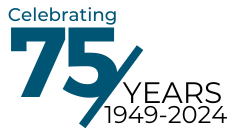One of the keys to running an efficient office space is good ergonomics. When workers are comfortable at their desks, they are happier and healthier. The happier your workers are, the more work they will be able to complete during the day. To make sure your office is comfortable enough for your employees, read up on the latest trends in office ergonomics so you can make the proper refinements.
Sit-Stand Workstations
Sit-stand workstations are becoming mainstays in the modern office. Studies have shown that standing while working can actually be healthier than sitting since workers can burn more calories in the process. Plus, it can actually help lower strain in legs and back, as long as it’s not done for too long.
By utilizing sit-stand workstations, workers aren’t forced to choose between sitting and standing. Since workers can switch between the two actions freely, they are able to sit back down and resume work if their legs get tired. If you don’t already have these workstations at your office, you should consider them.
Focus on Mobility & Flexibility
Mobility and flexibility are important characteristics in an ergonomic office. Workers will be much more comfortable in their work environments if they can move about freely and get where they need to as quickly as possible. Besides that, an office that entices workers to get up and move is great for keeping your workforce as healthy as possible.
To make it easier for office workers to get around, focus on creating a flexible workspace. This involves setting up work areas that can be used for several different purposes. For example, a lounge could be used as a makeshift meeting room, and not just a place to relax and have lunch.
These flexible work environments can be made by investing in furniture that can be easily moved without a lot of force. This makes it easy to change the office layout to suit your needs, while also making it easy to create enough walking space.
Outdoor Work Areas
It’s always a good idea for workers to go out for a walk during work hours since it can get tiring to sit inside for long stretches. A few office designers have realized this, and have worked on designs that let workers sit outside while staying on the company’s property. This has led to the creation of outdoor spaces in several modern offices.
Being outside lowers tension, and being surrounded by nature and natural sunlight gives employees enough motivation to keep up with assignments. In addition, studies have shown that being outside can help improve concentration.
Even something as simple as a small patio outside the office breakroom can go a long way to improving company morale.
The Rise of Monitor Arms & Extensions
It’s not uncommon for office workers to use multiple computer screens at the same time. Being able to view things from two screens at once removes the need to switch between tabs, which bolsters productivity. However, workers can give themselves neck strain if these screens aren’t properly displayed, which is why monitor arms and risers are becoming quite popular.
If a computer monitor is too low, a riser can bring it to a better height at eye level. Monitor arms are especially useful, since they can also bring the screen closer if it is too far away. Eye strain and neck pain are detrimental to office workers, so these tools are definite lifesavers.
If you are looking to improve the ergonomics of your workspace, you might be interested in the Platinum Series Monitor Arms Solutions from Fellowes. This solution makes it easy to adjust your monitor’s position, making it an excellent option for office collaboration.


